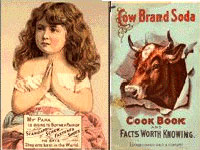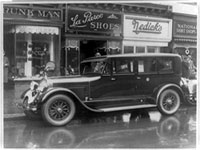Emergence of Advertising in America: 1850-1920

These 9,000 advertising items and publications date from 1850 to 1920. Selected items illustrate the rise of consumer culture in America and the development of a professionalized advertising industry.
Images are grouped into 11 categories: advertising ephemera (trade cards, calendars, almanacs, postcards); broadsides for placement on walls, fences, and buildings; advertising cookbooks from food companies and appliance manufacturers; early advertising agency publications created to promote the concepts and methods of the industry; promotional literature from the nation's oldest advertising agency, J. Walter Thompson; early Kodak print advertisements; Lever Brothers Lux (soap) advertisements; R.C. Maxwell advertising company images; outdoor advertising; scrapbooks; and tobacco ads.
Each category contains a brief overview, and each image is accompanied by production information. The site, searchable by keyword or ad content, includes a timeline on the history of advertising from the 1850s to 1920. This easy-to-use collection is ideal for researching consumer culture and marketing strategies.
